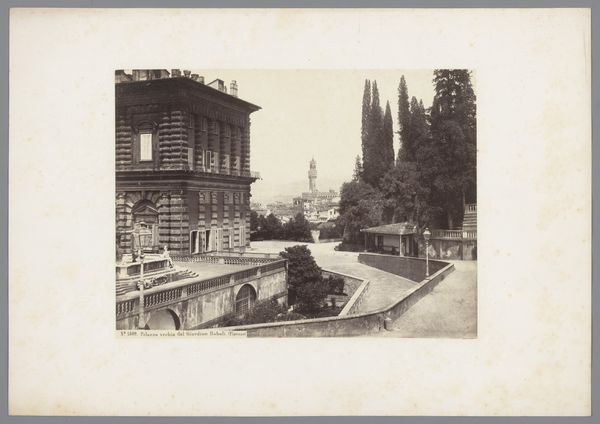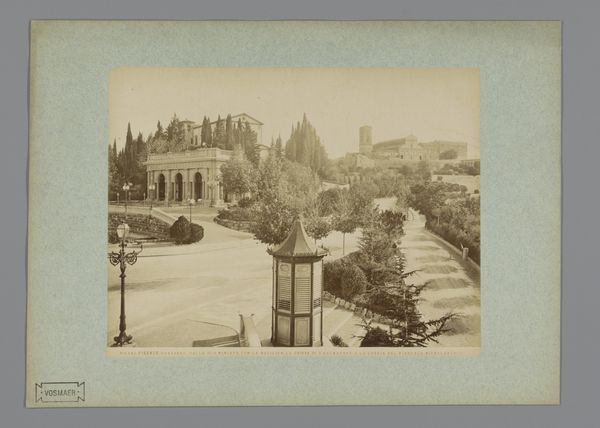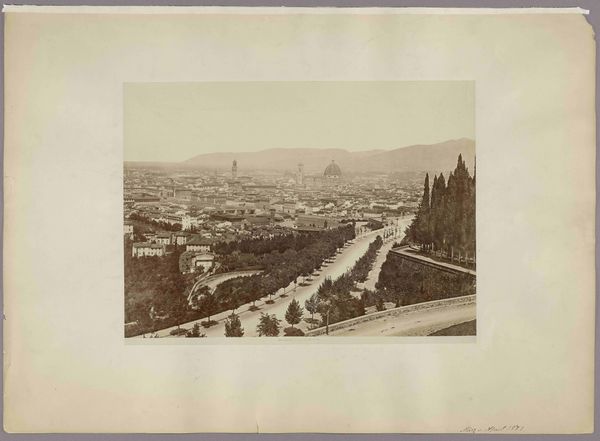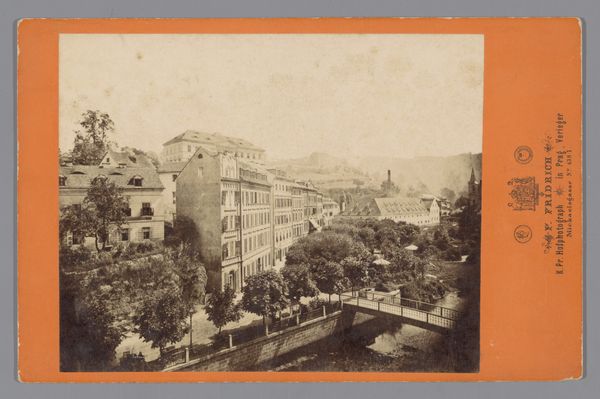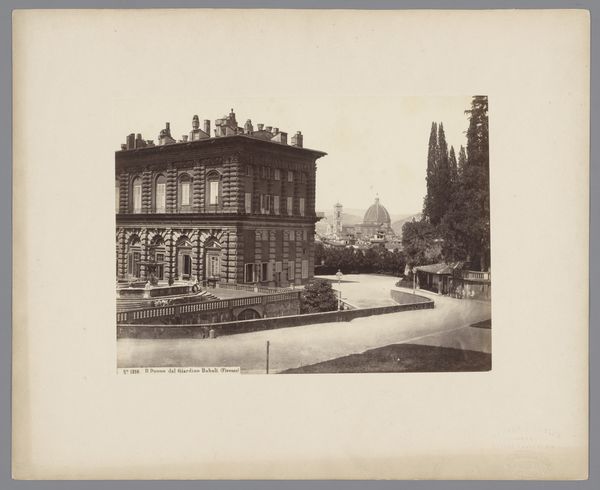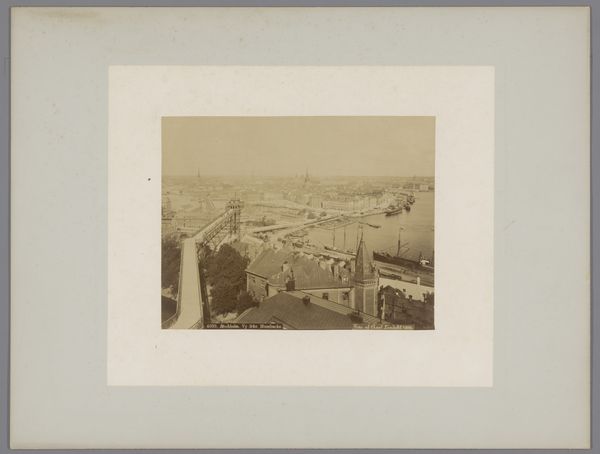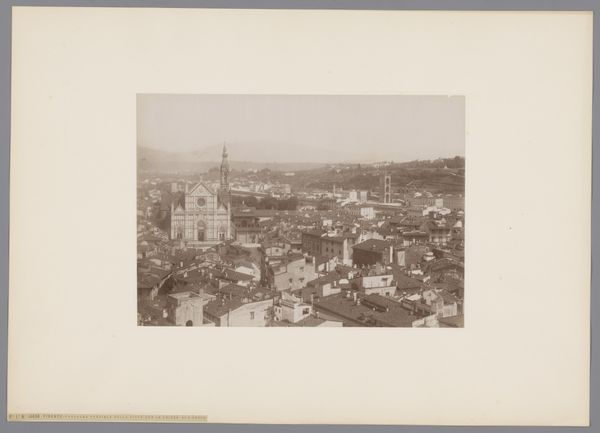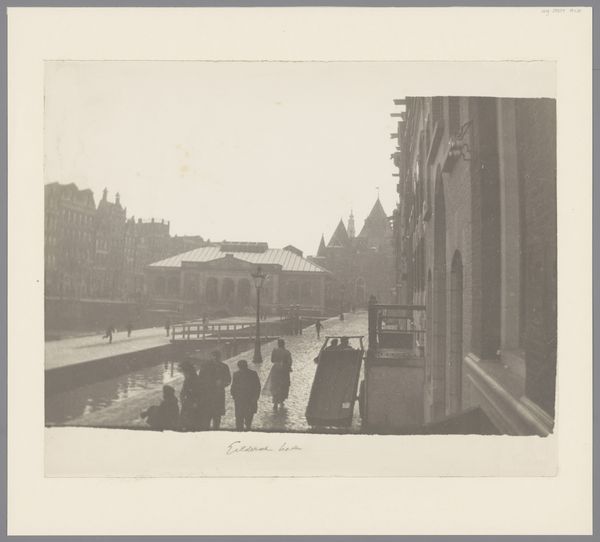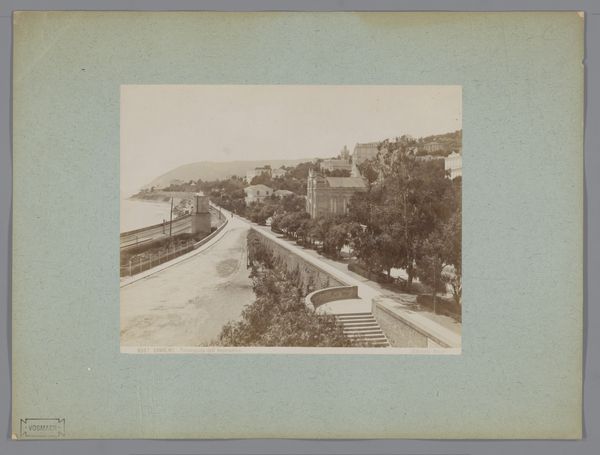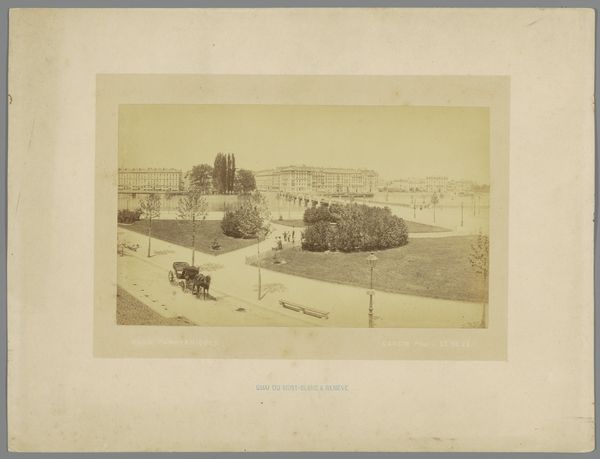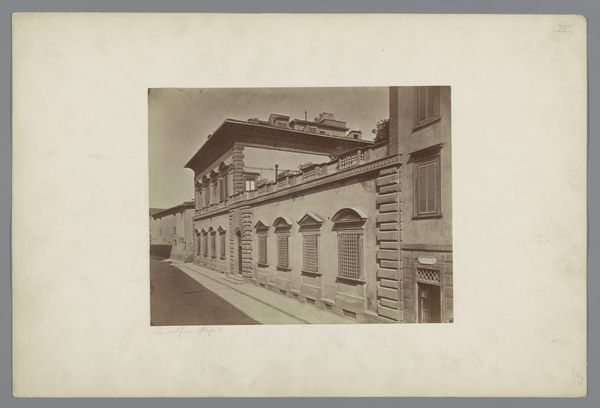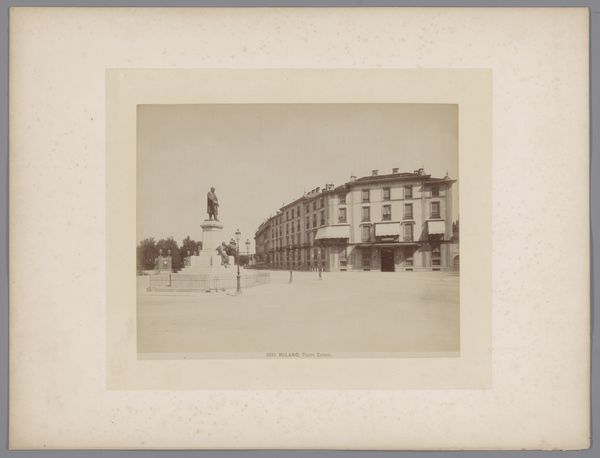
Florence_ View of the Palazzo Vecchio from the garden of Palazzo Pitti before 1873
0:00
0:00
albumen-print, print, paper, photography, albumen-print, architecture
#
albumen-print
#
16_19th-century
# print
#
landscape
#
paper
#
photography
#
orientalism
#
cityscape
#
albumen-print
#
architecture
Copyright: Public Domain
Curator: The sepia tones in this albumen print, captured by Fratelli Alinari, give it such a nostalgic feel. It's titled "Florence, View of the Palazzo Vecchio from the garden of Palazzo Pitti" and dates to before 1873. Editor: The immediate impression is one of power, even absence, seeing this fortress-like structure framed against what appear to be carefully cultivated gardens. It is as though power rises from the gardens, not so surprising if you acknowledge it originates through domination. Curator: I find it fascinating how the Palazzo Vecchio is positioned in the distance, almost like a symbol or focal point. It reminds me of ancient cityscapes, where landmarks signified order and history. Do you sense a continuity of visual language here? Editor: I think so. What this work makes immediately apparent is how architectural photography contributes to solidifying the iconography of the State. This specific viewpoint, framing Palazzo Vecchio in relation to the bourgeois gardens of the Palazzo Pitti, visualizes power both physically and ideologically. Curator: Definitely. It presents a deliberate selection and perspective. How do you feel this careful staging impacts our perception? Editor: It reinforces the idea of Florence as a historical power, seemingly immune to the social upheavals already emerging during the 19th century. This idyllic view, curated to erase signs of working-class life or urban unrest, caters to a specific consumer: tourists of the era who can, as a result, ignore their own country’s exploitative history and socio-economic conditions. Curator: It’s fascinating how this seemingly innocent cityscape reflects that. It underlines the idea of selective visibility, where certain historical or social narratives are prioritized. It offers an almost meditative effect. Editor: Right. Seeing this makes you wonder about the narratives not included, voices silenced, the inequalities perpetuated behind such romantic scenery. This print operates less as document of the actual social space, and more like a commodity designed to perform within existing ideologies. Curator: I’ll certainly view the piece with those absences in mind now. Editor: Indeed. Its picturesque aesthetic invites critical exploration and allows us to consider how photographs, even historical ones, continue participating within discourses of power and historical (re)presentation.
Comments
No comments
Be the first to comment and join the conversation on the ultimate creative platform.
